MUSIC FOR VIOLA AND ELECTRONICS.
Michel Banabila and Oene van Geel first met during their collaboration for the Cloud Ensemble EP (vinyl, 2013). Excited by the idea of further combining their sound-worlds, they embarked on a new venture to continue their electro-acoustic narrative. Much of the creative process of this album emerged during the recording process itself. On the track ‘Echoes from Hadhramaut’, their mutual friend Bruno Ferro Xavier da Silva joins them, with a multilayered bass texture. Sometimes compositions of Michel are the core of the music and in other occasions Michel created a lot out of improvised viola sounds and melodies of Oene. When Oene added viola melodies and textures, sometimes he was thinking with the mindset of a composer and sometimes he was floating on intuition, looking for what the story had to tell. Michel’s very first steps on his brand new Doepfer A-100 modular system blended well with Oene’s viola and Stroh violin improvisations, and after several sessions together, they transformed their sound sculptures into these 5 new tracks, now presented on CD as : “Music for Viola and Electronics”.(with much thanks to Joeri Mol & Marc Weidenbaum)
Part 1:
Reviews:
DISQUIET:
A lovely duet for complementary toolsets, one analog, the other digital. It’s to the album’s credit that it isn’t always clear where one of those ends and the other begins. One track, “Dondergod,” gets a bit intense, in a European free improvisation sort of way, but the rest is elegant as could be.. (Marc Weidenbaum)
A CLOSER LISTEN:
The title may be bland, but the music is not. Music for viola and electronics is music for barren trees and weakening temperatures, shuttered doors and deserted streets. Its elegant beauty arrives just in time to score the starkest segment of fall, when leaves have passed their peak and daylight savings time has begun. This is a lost time, identified by its proximity to holidays, but also a rich time, yielding the last birds, the first frost. Michel Banabila‘s electronics provide the stark backdrop; Oene van Geel‘s viola provides glimpses of life in transition. The center track also includes bass: a throbbing pulse at the center of the set. But one would be forgiven for thinking that bass is present on other tracks as well, especially the booming “Dondergod”, an abrasive selection that sheers slices of sound like branches from a fallen tree. It’s no surprise that the title is Dutch for “thunder.” Banabila and van Geel met while recording last year’s Cloud Ensemble; the collective also included Machinefabriek and Grzegorz Bojanek. After trading ideas, they decided to work together again. In its softer moments (especially the gorgeous “Sinus en Snaar”), one can detect echoes of Richard Skelton; in its louder moments, Ben Frost comes to mind. Yet this specific combination – viola and electronics – is relatively rare. The humility of each performer is apparent, as composition, improvisation, and shaping duties shift from song to song, man to man: a fluid trade that yields far greater dividends. As the set progresses, one can hear the season unraveling. The viola protests: may I not continue to play outside? Yet thunderclouds are forming, and there’s no guarantee they contain rain. “Echoes from Hadhramaut” is a stratocumulus cloud preparing to erupt, which it finally does with a bang at 6:39. But then, as if relenting, the duo offers church bells and tentative melodies, leading to “Nothing But Blue Skies”, the album’s sweetest piece. One remembers a hidden truth: that the sky is as blue in winter as it is in summer. Only below can we tell the difference. Perhaps this is why the final piece is titled “Kingdom of Earth”. Finally the (actual) rain begins to fall, a cold precipitation on the verge of change, but Werner is singing in the rain. (Richard Allen)
ATTN MAGAZINE:
When Music For Viola And Electronics is at its most patient and aloft, it’s like sculpture in watercolour. “Nothing But Blue Sky” is a beautiful amber cloud whose slow spinning put emphasis on each of its faces in turn, retaining the central shape even as the sides bulge and disappear from my perspective. Slopes of viola run through each surface like palm lines, as an elegant, swooping signature upon an endless white sheet. “Sinus En Snaar” depicts wires drooping out of alignment, as pleasant chords sag into dissonance and the centre of gravity rolls through the structure like an invisible bowling ball. Tilt and rotation are often the album’s primary modes of progression, and the composition hangs as a three-dimensional object fixed in the air above the heads of Banabila and Van Geel – a central tangible idea, mutually understood yet articulated differently. Elsewhere, the duo are stranded within their own music. “Kingdom Of Earth” is a ritual in the rain, with water shivering upon pulsating drum skins and droplets squashed between handclaps, the bow fidgeting and groaning uneasily as if implanting grim prophecy into the distant cracks of thunder. “Dondergod” is like a pitch-black maze created in Nikola Tesla’s basement, full of slamming industrial doors and sudden fountains of free-flowing electricity, implanting artificial zig-zag into a collage otherwise comprised of vapour and sunlight. Perhaps the record’s traversal from airborne figures to craggy landscapes is a sort of exchange trip negotiated between the two instruments, the former inducting the electronics into the elegance and silken ripple of Van Geel’s strings, and the latter abandoning the viola among Banabila’s voltage and violent weather. (Jack Chuter)
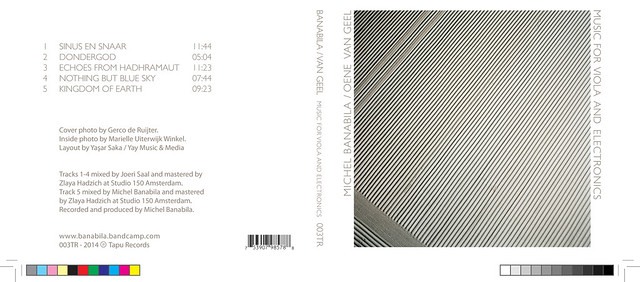
GONZO CIRCUS 124
Michel Banabila kennen we als de geluidsartiest die al vanaf 1983 vanuit Rotterdam zijn diverse sonische boodschappen de wereld instuurt, en Oene van Geel als de altviolist van Zapp4, The Nordanians en 0000. Dat is erg kort door de bocht want de twee doen nog wel meer dan dat, maar laten we ons even beperken tot de kern. Ze leerden elkaar in ieder geval kennen door de 'Cloud Ensemble' ep uit 2013, en 'Music For Viola And Electronics' is daar een direct uitvloeisel van. De vijf tracks zijn nu eens gebaseerd op composities van Michel Banabila, en dan weer op de geïmproviseerde altvioolgeluiden en melodieën van Oene van Geel. Banabila gebruikte voor het eerst de Doepfer A-100, een analoge modulaire synthesizer gebouwd met de stapelbare versies uit de jaren 1970 in het achterhoofd. Het resultaat van de bewerking van de geluiden mag er zijn: van begin tot eind houdt het duo de spanning vast met een mix van ambient, noise en klassiek, waarin echo’s doorklinken van folk, filmscores, free jazz en Frippertronics. (avs)
VITAL WEEKLY 950:
This is a great release, which sounds like more than an excellent mix between modern classical music (more Arvo Part than anything plink plonk, except perhaps 'Dondergod'), improvised music, electronic soundscapes and perhaps much more in between the cracks of all of this. But the beautiful minimalist approach of 'Nothing But Blue Sky' is just beyond any categorization. This is a most refined release, one that fits the sombre, grey day, with the changing of the season. (FdW)
CALEIDOSCOOP - SUBJECTIVISTEN:
Sterk op altviool leunende muziek, die dan op innovatieve wijze omlijst wordt door de elektronica, en op andere momenten bijzondere elektronische vondsten die op spannend altvioolspel kunnen rekenen. De neoklassieke en elektronische muziek wentelen om elkaar heen, touwtrekken aan elkaar en zijn ook dikwijls in harmonie met elkaar. En in de ruimte tussen die twee werelden krijg je prachtige spanningsbogen maar ook intrigerende stukken buitenaardse wereldmuziek. Organische en abstracte muziek, die een gelaagde maar coherente hybride vormen. De ambivalentie in de muziek maakt dat het telkens spannend blijft. De rest lijkt op desolate wijze over lagen permafrost voort te bewegen, terwijl er allerlei schitterende beelden aan je voorbij gaan. Noords isolationisme, terwijl je warm onthaald wordt, zoiets. Het is derhalve een prachtig samenwerkingsverband geworden van twee artiesten die elkaar tot grotere hoogten weten te drijven. Je ontdekt alle details het beste met de koptelefoon op. Biologerende beauty ! (JanWillem Broek)
Banabila & Van Geel live at Rewire 2016 (snippets) from Michel Banabila on Vimeo.
INACTUELLES:C'est une rencontre. Entre Michel Banabila, compositeur de la scène électronique expérimentale néerlandaise, et Oene Van Geel, altiste et compositeur improvisateur qui passe allègrement du jazz à la musique indienne, participe à de multiples formations. Ils se sont rencontrés pour le Cloud Ensemble, ont décidé d'aller plus loin, d'où ce disque. Absolument magnifique, envoûtant. Le système Doepfer A-100 modulaire de Michel Banabila fait merveille : textures miroitantes, on ne sait plus très bien ce qu'on entend, tout peut advenir dans ces changements à vue, ces virées diaphanes, ces timbres évanescents qui se résorbent dans un souffle. Un superbe mariage électro-acoustique !! (Dionys Della Luce)
UITILITY FOG - FB RADIO:
A different take on strings and electronics comes from frequently-featured Dutch artist Michel Banabila's new album with his countryman Oene van Geel on viola. Some rhythmic bass throbbing is the closest we get to a beat, but mostly it's ambient glitchscapes with occasional explosions, and at points surprisingly folky multi-tracked viola. Well worth lending your ear. (Peter Hollo)
KWADRATUUR:
Elektronicamuzikant Michel Banabila en altviolist Oene van Geel ontmoetten elkaar in het Cloud Ensemble, waar het idee ontstond om samen iets op poten te zetten. Het resultaat van die duowerking is te horen op ‘Music for Viola and Electronics’ in vijf soms heel uiteenlopende stukken die allemaal wel een uiterst verzorgde en fijn bijgeschaafde sound gemeenschappelijk hebben. Opvallend daarbij is hoe goed de altviool van van Geel en de modulaire Doepfer A-100 synthesizer van Banabila (overigens de eerste keer dat hij het instrument gebruikte) versmelten. Nergens is de muziek te herleiden tot een strijker die wat op de elektronica drijft. Van Geels klank zit diep in het geluid, wat het album een heel homogeen gevoel geeft. Met dat gevoel gaan de twee wel verschillende wegen uit. Zo zweven ze in ‘Sinus en Snaar’ in wolken van kil perfecte sinustonen en lang uitgerekte altvioolklanken. Door die in verschillende combinaties boven elkaar te plaatsen en door plotse glissandi ontstaat een klankmassa die continu van vorm verandert waardoor de muziek gestaag ontwikkelt. Zomaar in een sfeer blijven hangen, is duidelijk niet waar de twee op uit zijn. Toch bewaren ze tegelijkertijd een logische lijn, waardoor de grovere korrel en de melodische en ritmische tekening die geleidelijk aan in het stuk opduiken eerder als een logische consequentie dan als een breuk klinken. Zelfs het stottergeluid, dat even een hardstyle stamper lijkt aan te kondigen, ligt uiteindelijk in de lijn van het voorgaande. Wat ruwer klinkt ‘Dondergod’ dat blaakt van de verstoorde noise, glitch-geluiden en dub-achtige flitsen in de diepte. Van Geel mengt zich krijsend en jankend in het geluid, dat later op het stuk knap uitgewerkt wordt wanneer de twee het reeds gehoorde muziek materiaal gaan verwerken. ‘Echoes From Hadhramaut’ zet dan weer in als een van weemoed doortrokken vergezicht over een uitgestrekte vlakte. Voorzichtig beginnen de onderlagen van de muziek te borrelen als onderaardse geisers. Uiteindelijk stromen die voorzichtig over, waarna met een dreigende freeze weer een nieuw hoofdstuk geschreven wordt in het verhaal van de track. De wolken van het eerste stuk keren even terug in ‘Nothing But Blue Sky’. Nu zijn ze echter niet opgebouwd uit lang doorzoemende klanken, maar uit boven elkaar geplaatste, melodische gestes van van Geel, met een cello-achtige partij als ankerpunt. Opnieuw mag het voor de twee wat meer zijn en uiteindelijk strooien ze salpeterzuur op het glazuur van het geluid, waardoor dat in snippers uiteenvalt. In het afsluitende ‘Kingdom of Earth’ lijken Banabila en van Geel tenslotte een eeuwenoude sage te vertellen, met klokachtige effecten, occarinaklanken, korte stemsamples, regengeluid, flarden altvioolmelodieën en tremolo’s. Het resultaat is een mysterieuze, transculturele collage die nooit het spektakel opzoekt, maar het moet hebben van het zorgvuldige montagewerk. Zo wordt ‘Music for Viola and Electronics’ een alles behalve evidente cd. Niet dat de muziek gezocht klinkt, wel integendeel. Feit is dat de heren het zich niet te gemakkelijk gemaakt hebben, wat natuurlijk voor hen en voor deze knappe en zinnenprikkelende release pleit. (Koen van Meel)
NIEUWE NOTEN:
In 2013 werkten Michel Banabila en Oene van Geel samen in het Cloud Ensemble, waarmee zij een EP opnamen. Die samenwerking smaakte naar meer en nu ligt er ‘Music for Viola and Electronics’ met daarop vijf tracks die wellicht nog het beste zijn te betitelen als klankgedichten. Zoals het bij moderne poëzie vaak gaat om de klanken die de zinnen en woorden in zich bergen zo geldt dat hier eveneens. Het gaat dus om uitbeelden, bijna zoals in een film. Een film die je voor je ogen voorbij ziet lopen als je de muziek hoort. Wat verwacht je bij ‘Dondergod’? Juist: onrustbarende, verstorende elektronica die Banabila voortbrengt op zijn splinternieuwe Doepfer A-100, een analoog modulair systeem, soms met een noise-achtig karakter. Aangevuld met de krassende altviool van Van Geel. Je nekharen gaan er recht van overeind staan. De sfeer op ‘Echoes from Hadhramaut’ is natuurlijk van een heel andere orde. De Hadhramaut vallei ligt in Jemen met de legendarische stad Shibam, vermaard om zijn lemen flatgebouwen. Sprookjesachtig, zo klinkt dit nummer, met een lichte spanning. Mede door de gastrol van bassist Bruno Ferro Xavier da Silva die het duistere, wat dit nummer nodig heeft, toevoegt. Onbestemde en ongerichte klanken zijn ons deel, tegen elkaar aanschurend. Of luister naar de klanken in ‘Kingdom of Earth’ waar Van Geel naast zijn altviool ook de Strohviool , of trompetviool bespeelt, een viool met een hoorn in plaats van met een houten klankkast. Op een bescheiden, Arabisch aandoende beat, soleert Van Geel hier doeltreffend, ijl en sferisch. Al met al heeft dit treffen tussen twee grootmeesters dus een mooi product opgeleverd. Oene van Geel, de winnaar van The Boy Edgar Award in 2013 en verder bekend van zijn rol in strijkkwartet ZAPP4 en The Nordanians brengt zijn achtergrond in jazz en hedendaags klassiek mee en zijn liefde voor de betere rock en Michel Banabila is sinds 2000 bekend als componist en geluidskunstenaar toen hij doorbrak met het album VoizNoiz en timmert sindsdien gestaag aan de weg, met als hoogtepunten tot nu toe de uitreiking van de Edison Jazz Award in 2003 voor VoizNoiz 3 dat hij samen met Eric Vloeimans maakte en de nominatie voor een Gouden Kalf een jaar later. Het album is te beluisteren en te bestellen via Bandcamp. (Ben Taffijn)
ADVERSE EFFECT MAGAZINE:
Another release from the prolific Banabila, here collaborating with fellow Dutchman and violinist Van Geel on five pieces of subdued, hazy and textural ‘spherics. The electronics are understated while the violin itself takes centre stage in a bid to lull us, little jazzy or folk-ish signatures aside, like a fresh ‘n’ warm duvet on a cold winter’s night. The aural equivalent of a glass of decent mulled wine. (RJ)
THE SOUND PROJECTOR:
Large spreads of what the title indicates : at first majestic, and already embodying drama (dynamically), resonating with cavernous snippets, inserts, crackling while the former large spreads play on. The trip is a quiet one, or so it seems, sliding along the harmonizing instruments (Stroh violin, viola, A-100 analog synth). A much more adventurous part opens, then : increasingly dynamic, with more conflict or at least drama, confrontation between the elements at play here > more fractured; then another story going on (or is it the same, turning different ?) : battle soundings, electronics exploding, ACTION ! Different-paced events, exciting sequences, gunshots booming to shake you from this fast and colorful lullaby. Strings extend and sustain (excessively) this moment, the instant, while rubbings of ambiguous origins occur. There’s a throbbing interaction between the various instrument (electronics being not the least); Save maybe for the first piece, and of this I’m not even sure, the music here is that of a moving landscape, a line being followed, a narrative unfolding before our very ears, through which the sounds, their location and their dynamics encapsulate their drama. Which is probably the idea.
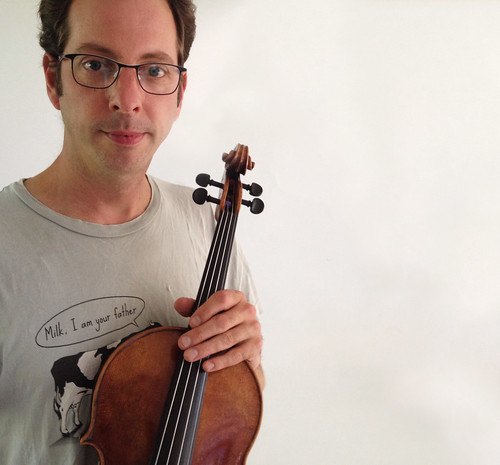
Oene van Geel
AVANT MUSIC NEWS:
Michel Banabila has been active for over thirty years, though his name has become more widespread in the last five or so. His approach is deep in the realm of electronic ambient music, and has been featured in television, film and theatre. Thus, it is not surprising that Music for Viola and Electronics, a collaboration with violist Oene van Geel, is reminiscent of a soundtrack. But background music it is not. Banabila lays down atmospherics over which van Geel slowly improvises. But this release gets particularly interesting when the duo electronically process viola recordings, to create soundscapes that would not be possible in a traditional setting. Banabila adds percussive sounds to van Geel’s rapid sawing to good effect, especially in Dondergod, one of the album’s more esoteric tracks. On the third track, Echoes from Hadhramaut, they are joined by Bruno Ferro Xavier da Silva on bass, adding a rumbling voice to the mix. Nothing but Blue Sky is a quieter, introspective piece, with van Geel double-tracked to evoke Indian textures. Informed by free jazz, post-modern classical music, and Brian Eno, but beholden to none, these two Dutchmen have produced a minor gem of an album. Very European in feel, Music for Viola and Electronics explores dark, wintry landscapes, and stark isolation. (Mike)
CANHDONGAMNHAC:
Michel Banabila is a composer, sound artist and producer who has produced musical scores for numerous films, documentaries, theatre plays and choreographies. Oene van Geel is a composer and violist who has been collaborating with a number of ensembles/soloists. Both artists share an interest in mixing disciplines and music styles. Their collaboration – “Music for viola and electronic” shows a variety of styles and techniques. “Music for viola and electronic” is elegant and adventurous at the same time. One analog, one digital, this lovely duet forms a narrative and electroacoustic/free improvisation approach throughout the album. The viola provides a wide range of sounds thanks to both traditional and extended techniques. There are many beautiful melodic phrases along with atonal textures. All of them merge with processed viola recordings to create an atmospheric effect. The Doepfer A-100 analog modular system explores abstract, dark territories and at the same time provides a carefully – crafted background for the viola. (Nhung Nguyen)
SQUIDCO:
Five lush, texturally complex and excursive works. ----> Carl Kruger's Top 20 for 2014.
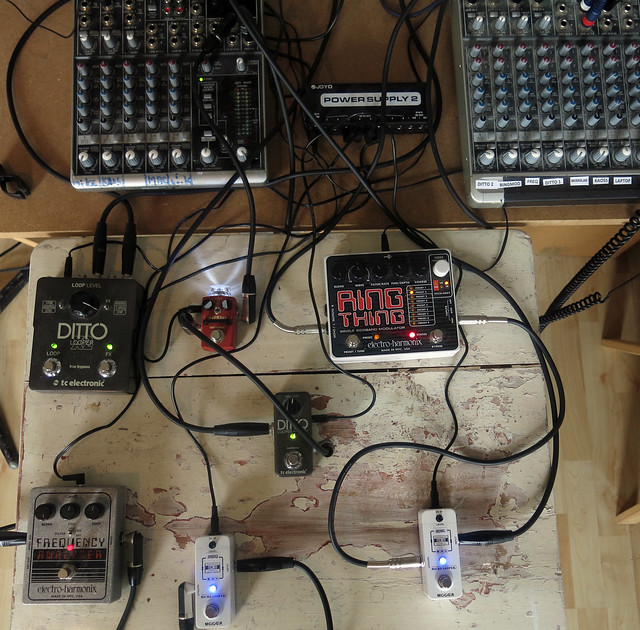
Cover photo by Gerco de Ruijter.
Inside photo by Marielle Uiterwijk Winkel.
Track 1-4 mixed by Joeri Saal and mastered by Zlaya Hadzich.
at Studio 150 Amsterdam. Track 5 mixed by Michel Banabila.
and mastered by Zlaya Hadzich at Studio 150 Amsterdam.
Released September 4, 2014.
Michel Banabila:
Doepfer A-100 analog modular system, Logic Pro (1,2,3,,4 & 5) , ocarina & voice (5)
Oene van Geel:
Viola (1,2,3,4 & 5) , Stroh violin (5)
Bruno Ferro Xavier da Silva : Bass (3)
Werner : Voice (5)
All tracks composed by Michel Banabila & Oene van Geel.
A special thanks to Dennis Verschoor and Pieter Moermans for advise on the Doepfer A-100.
We would like to acknowledge financial support from the Fonds Podiumkunsten for the realization of this album.
2014 ℗ Tapu Records / 003TR
Part 2:
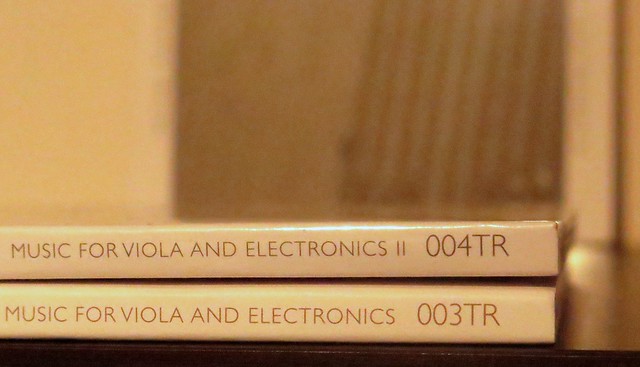
On Music for viola and electronics II, Banabila and Van Geel explore further into their neo classical mix of viola improvisations, ambient textures, minimal compositions, and modular experiments.
After their collabs on 'Music for viola and electronics', (2014) Michel Banabila and Oene van Geel decided to continue their recording sessions, again combining viola with electronics. This time they invited Eric Vloeimans on trumpet, Keimpe de Jong on contrabas clarinet, Joost Kroon on drums, Emile Visser on cello and Radboud Mens for Ableton programming. Emile plays in Zapp String Quartet with Oene, Eric performed live with Oene and The Nordenians, Eric and Michel worked before on their award winning album VoizNoiz 3, Keimpe and Michel performed together in a theatre play, Radboud and Michel worked on ZoomWorld and many other projects together. The artwork is again by photographer Gerco de Ruijter.

Quotes, reviews:
THE SQUID'S EAR:
Diverse. This is the first word that must be used in describing Music For Viola And Electronics 2. Electronic musician Michel Banabila and Violist Oene van Geel explore more territory on one album than seems possible. They touch on free jazz, industrial beats, drones, noise, groove jamming, and compositional elements reminiscent of Steve Reich and even Andrew Loyd Webber. Yet, the album flows nicely and is amazingly coherent despite the wide variation. Another word one might use is "cinematic." The album feels at times like a soundtrack. That's not to say that it is destined to be used as background music, but that the music has a narrative. It is a dramatic, emotional journey, similar to cinematic music. This quality is most pronounced on the third track, "Vleugels". This piece begins with looped melodic viola, reminding the listener of the classical minimalism of the 1960s. It then weaves its way into a rich emotional composition with thick tonal harmonies. When electronic drum beats ramp up to a rock feel, the music begins to sound like a modern Broadway musical. On the other end of the spectrum is the final piece on the album, which features chaotic string punches and layered synth tones, which sound like insects buzzing. Somehow it all falls together into a coherent musical statement. Every musical destination flows seamlessly into the next in a natural and logical manner. The end result is a beautifully pleasant album. Rarely are experimental albums this accessible; Banabila and van Geel have put together an album that can be fully appreciated by any avant-garde fan, without enraging their neighbors. (Christopher Mandel)
CAFE ACOUSMATIC:
Michel Banabila’s and Oene van Geel's Music for viola and electronics I & II is wonderfully immersive, expansive, and intimate. If there’s one word that comes to mind, over and over it’s cinematic. The listener is swept up in a storyline that’s played out by two superb actors, in this instance, Oene von Geel’s viola and Banabila’s electronic counterpoint of mood and temperament. The overall result is a sonic dance that fills the space and the heart. Let’s encourage these two superb musicians keep collaborating. Highly recommended for headphones. Five stars. (Don Hill)

AMBIENTBLOG:
After they met when working together on Cloud Ensemble, Michel Banabila and Oene van Geel extended their collaboration which resulted in 2014’s “Music for Viola and Electronics“. Both were so very enthusiastic about the new musical world that they had opened up, that they kept working on “Music for Viola and Electronics II“, which is released this month. Judging by the (strikingly beautiful!) aerial landscape photography of Gerco de Ruijer on the cover, their collaboration will probably not end here: the crop of the (geometric) landscape on the Volume I cover photo is only partially harvested – by hand, line by line… a difficult, strenuous, but most rewarding work. Even for those that follow Banabila’s work throughout the years, “Music for Viola and Electronics” is a bit hard to classify, because it’s different from most of what he did before. At least, it seems that way: according to Michel himself, it’s simply a next step – the logical consequence of everything he has done in the past. The combination of Michel’s modular Doepfer electronics with the warm natural sounds of Oene’s viola opens up completely new perspectives. In some way, it is easier to say what this music is nót, than to describe what it ís. It cértainly is a roller coaster of emotions and dynamics, which probably is demonstrated best at the beginning of Volume I: after opening with the carefully restrained, almosts zen-like “Sinus en Snaar”, complete turmoil kicks in with the aptly named “Dondergod” (“Thunder God”). It’s probably best to put on safety belts before you play this on high volume! “Music for Viola and Electronics II” builds further on the same concepts as the first volume. Some extra musical guests are introduced on several tracks: Keimpe de Jong (contrabass clarinet), Joost Kroon (drums and metals), Emile Visser (cello), and Eric Vloeimans (trumpet). There are some distinct references to somewhat less ‘experimental’ musical territories. For instance, “Kino Mikro” and “Vleugels” both have a rather cinematic arrangement (the latter taking a surprising turn midway with frantic drumming backed by a string section that sounds like a metal band – a surprising moodswitch effectively breaking the constraints of minimalism). Unlike many other albums that choose to focus on one particular atmosphere, these albums are more like a kaleidoscope of fragmented emotions. This may be a bit confusing at first listen, but it proves to be very rewarding if you carry through and keep listening ! (Peter van Cooten)
UTILITY FOG (FBI Radio):
Music for viola and electronics II follows the same sonic path as part 1 but adds further instrumentation: bass clarinet, cello, trumpet, drums. It's not all experimental modular electronics & extended techniques, but nor is it all lush world beats & string melodies – it strikes a nice balance. They've both stayed on my virtual turntable a lot recently. (Peter Hollo)
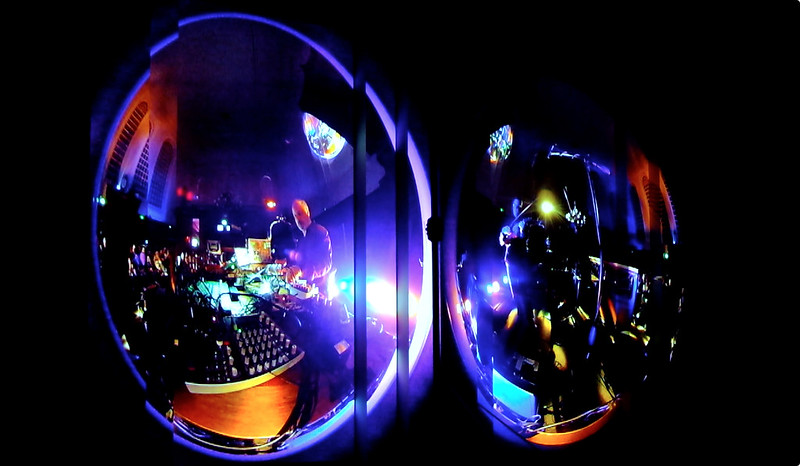
VITAL WEEKLY 976:
In the last six months they worked on new music, again using their set-up of electronics, which is for Banabila a doepfer A-100 analog modular system, radio, logic pro and keyboards (the latter on all tracks) and Van Geel plays viola and 5 string violin. I was highly surprised by their release, and obviously the second release is not the similar surprise (it could be, of course, but it just isn't) but it further explores the nature of violin playing and electronics. 'Chaos' comes close to the world of free jazz, with some wild electronics too and a fine orchestral ending. In the longest piece, 'Hephaestus', that also is the opening they set the compass to all things drone like and atmospheric, along with the modular synth cracking up like rainfall and some sparse drumming, making it all a very intense piece. A top-class release of some highly exciting electronic music meeting classical instruments. (FdW)
SUBJECTIVISTEN / HET SCHADUWKABINET:
Vorig jaar maakt Michel Banabila samen met violist/componist Oene van Geel, van huis uit een jazzviolist met een hang naar Indiase muziek, kamermuziek en improvisaties, de cd Music For Viola And Electronics. Ze brengen op biologerende wijze beide werelden samen in een bijna buitenaardse setting met elektronica, neoklassiek en experimenten. Genoeg reden om door te gaan en nu deel 2 hiervan te presenteren. Banabila (Doepfer A-100 analoge modulaire synthesizer, logic pro, keyboards) en van Geel (altviool, 5 string viool) krijgen hierbij rugdekking van Keimpe de Jong (contrabas, klarinet), Joost Kroon (drums), Radboud Mens (programmeringen), Emile Visser (cello) en de gelouterde Eric Vloeimans (trompet); een waar sterrenteam. Het levert een nog meer diepgravend en fascinerend hoorspel op vol subtiele details. Op organische wijze maken ze spannende dwarsdoorsneden van ambient, neoklassiek en meer abstract elektronische muziek. Deze worden gelardeerd met wereldse, rock- en jazzelementen en bijzondere bijgeluiden. “Vleugels” is zo’n prachtig voorbeeld, waar dat alles op zinderende wijze samenvloeit. Maar ook de andere 4 tracks zijn van een onbeschrijfelijke klasse en schoonheid. Arvo Pärt, Tapes, Nils Økland, Hector Zazou, Robert Normandeau, Giacinto Scelsi, David Darling, Loren Nerell en de “Made To Measure” serie, dat is waar ik vooral aan denk bij deze innovatieve beauty. (JanWillem Broek)
POLYPHONIA:
Holenderscy artyści znów połączyli swoje siły, czego efektem jest druga część album „Music for viola and electronics II”. Obaj panowie (Michel Banabila i Oene van Geel) spotkali się po raz pierwszy w trakcie współpracy przy projekcie Cloud Ensamble (2013). Rok później ukazał się ich pierwszy longplay, pt. „Music for viola and electronics”. Mniej znaną postacią jest Oene van Geel, więc dodam, że to skrzypek i kompozytor pochodzący z Amsterdamu. W jego kompozycjach można znaleźć wpływy muzyki indyjskiej, jazzowej, kameralistyki czy wolnej improwizacji. Udziela się w takich formacjach jak Zapp 4, Estafest, The Nordanians, Art of the Eyebrow, The Splendorkestra. Na „Music for viola and electronics II” pojawiło się znaczniej więcej różnych brzmień instrumentów (trąbka, kontrabas, klarnet, perkusja) niż na pierwszej części. Banabila, tak jak poprzednio, zajął się warstwą elektroniczną i systemami modularnymi, a van Geel odpowiada za smyczkowe partie. Płytę otwierają („Hephaestus”) mroczne, chłodne i potężne drony, które z czasem „topnieją” i niepostrzeżenie zamieniają się w oniryczne ambientowe melodie zanurzone w improwizacji. Podobnie też jest w bardzo ciekawym utworze „Chaos”. Zaskoczenia doznacie zaś w „Vleugels”, gdzie ni stąd ni zowąd przenosimy się bliżej klimatu Islandii spod znaku Sigur Rós. W „Radio Spelonk” miesza się nastrój filmowy z elementami słuchowiska i improwizacji. Całość zamyka nagranie „Kino Mikro” – minimalistyczne, ziarniste, lekko zaszumione, z kolei w samej końcówce ten fragment staje się bardziej dynamiczny, zwłaszcza dzięki partiom van Geela. Artyści po raz kolejny pokazali, że mocną stronę ich materiału, jest improwizacja. (Łukasz Komła)
A CLOSER LISTEN:
Music for viola and electronics II is a very good album, an improvement over its already solid predecessor. But with one small adjustment to the track sequencing, it becomes a great album. In its current order, the timbres grow louder and busier until the bursting centerpiece, “Vleugels”. After that, a severe drop in energy ensues. But move the last two tracks to the front, and one can appreciate the artistry of the entire set. Expanding on the palette of the previous installment, Michel Banabila and Oene van Geel have added a bevy of complimentary instruments, including violin, trumpet, bass clarinet and drums, along with additional programming. A number of invited guests makes the moniker seem incomplete. There’s even an uncredited, fragmented female voice on “Radio Spelonk,” which reminds one of the recent experiments of Felicia Atkinson. This subtle, creeping piece deserves to be heard first, as it is both the softest track and the largest surprise. The sparse nature of this piece is echoed on the subsequent track, “Kino Mikro” (“Micro Cinema”), but this time the viola receives the chopping treatment, poking holes in muslin cloth until it finally breaks through. A slight air of menace pervades the piece, thanks to the slow pace and the pleading cries of the trumpet. But in its final three minutes, the piece turns to glitch, more than doubling its pace and throwing the windows open to the rest of the band. As it stands, the album ends in a repeated vinyl pop, but we like it better when the pop leads to another menacing piece, the current album opener “Hephaestus.” To refresh our readers’ memories, Hephaestus was the blacksmith of the gods: hammer, anvil, fire. One can imagine him in his workshop as the thirteen-minute piece unfolds. Drones and static surges contribute a near-industrial flavor. The vinyl pop reappears in the third minute, flickering like tongues of flame. In the seventh minute, the dark drums arrive like the pounding of steel, accompanied by the sizzling sound of falling stars. This is magnificent, restrained work, a mature blend of instruments and influences unlike anything on the preceding album. At this point, it’s fair to reiterate our opinion that these albums need stronger, more allusive titles; Hephaestus would have been perfect. Imagine now that the album is building toward its conclusion. The new penultimate track is “Chaos”, an all-out assault on the senses. van Geel’s viola is no longer content to remain in the shadows; the artist establishes his presence early, guiding the other instruments through a maelstrom of swirling sound. The track implies chaos by injecting sudden electronics, but ironically, the music itself has form, repeating themes on its way to a structured conclusion. The melancholic middle is its finest section, a yearning whisper that follows the hoarse throat of a scream. And then, “Vleugels” (“Wings”). On this piece, the talents of the entire cast are showcased, and the music reaches for the stratosphere: out of the muck, out of the mire, out of any earthbound tragedy or terror. The opening moments sound like a rising flock, the first third like darting, and the final five minutes like soaring. With only 3:35 to go, the drums take the piece beyond the clouds. The sun spills forth, glistening in rainbows on the oil of the flock’s wings. And finally, for the first and only time on the album, pure strings, pure beauty, pure joy. Yes. This is where we want to end. (Richard Allen)
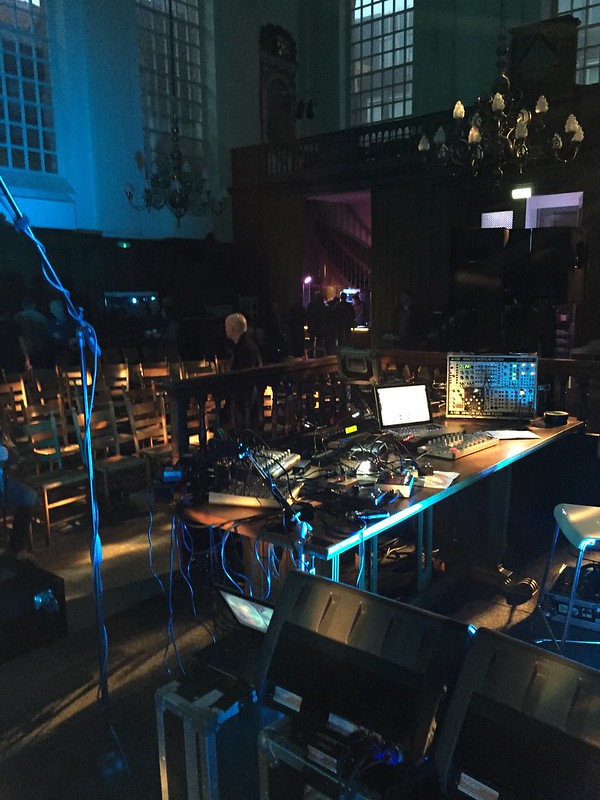
KINDAMUZIK:
Texturen en timbres vallen uit de lucht in een glooiende vallei waar een ietwat onheilspellende disharmonie en dissonantie schuurt. Wringende minimale muziek wordt geduwd richting geluidskunst-achtige exploraties die spetteren en knarsen. Ze barsten van de bezieling en vooral van zeggingskracht. En dan niet van het afgekloven clichésoort dat onder de stoplap 'cinematisch' gevangen moet worden, maar juist in temperamentvol flikkerende en hakkelende stop-motion, waarbij je op de achtergrond de projector meent te horen ratelen. De forte van Banabila, Van Geel & Co. is de warmte die eerstgenoemde uit zijn modulaire Doepfer weet te krijgen en die spruit ook uit de nerven van Van Geels klankkast. Daarmee is dan ook zo ongeveer de enige gemene deler van deze fragmenten aan borrelende, kwieke inspiratie gemarkeerd. Stiekem loop je het risico niet verder te komen dan het absoluut fenomenale openingswerk 'Hephaestus', dat urenlange repeat opeist. En daar is nu eens helemaal niets mis mee, al zou je dan wel voorbijgaan aan de nodige brille waarin freejazz, postrock en folk langskomen. (Sven Schlijper)
GONZO CIRCUS #127:
Rotterdam staat bekend als de stad van het harde werken. Ook in de muziek kennen ze dat adagium. Naast artiesten als Machinefabriek en Lukas Simonis, heeft ook Michel Banabila een hoge productiviteit. Een half jaar na zijn samenwerking met altviolist Oene van Geel op 'Music for viola and electronics', is er al weer een vervolg hierop. Dit keer krijgt het duo hulp van een aantal gastmuzikanten als Eric Vloeimans, Emile Visser of Radboud Mens. De CD opent met een ambientachtig stuk van twaalf minuten waarop Banabila en Van Geel een duel 'uitvechten' met geknetter van electronica en dramatisch aanzwellende viool geluiden. In het experimentele 'Chaos' laten de gasten zich horen en het zijn vooral de altviool en cello (Emille Visser) die zich doen gelden. 'Vleugels' begint minimaal en het lijkt een stuk voor strijkers te worden. Halverwege zit er echter een verassende break waarna het veranderd in een rocknummer. In 'Radio Spelonk' speelt Banabila met afgeknipte stemsamples te midden van minimale electronica. De laatste track klinkt als een soort allegaartje, maar draagt zeker bij aan het constante hoge niveau van de avontuurlijke muziek op dit album. (Oscar Smit)

FLUID RADIO:
Music for viola and electronics II with Oene van Geel is an expansive, stylistically omnivorous affair. The influence of acousmatic approaches to composition makes its presence felt. As its title suggests, “Music for viola and electronics II” is the second duo album from Banabila and van Geel, though as a description of the music it’s a little bit misleading: a number of other acoustic instruments feature on the album, such as trumpet, clarinet, drums, and cello, and there’s additional programming from Radboud Mens. The treatment of electronic sounds is very typically acousmatic, with rapid cuts and leaps across the stereo field. The acoustic instruments, however, tend to be arranged in ‘modern classical’ configurations, with rhythmic and melodic motifs drawn from folk complementing the lush block chords and some very nice pizzicato work from the viola. The beats laid over the top by drummer Joost Kroon took me by surprise, but made more sense with each listen. Not usually my thing, but an enjoyable listen nonetheless. (Nathan Thomas)
INACTUELLES:
Michel Banabila et Oene Van Geel récidivent. Après le volume I paru en 2014, voici le volume II sorti depuis peu, avec une nouvelle superbe photographie aérienne de Gerco de Ruijter en couverture, et quelques musiciens en renfort : la clarinette basse de Keimpe de Jong sur le titre 2, Joost Kroon à la batterie et aux métallophones en 3, Radboud Mens à la programmation ableton en 5, Emile Visser au violoncelle et Eric Vloeimans à la trompette sur les titres 2, 3 et 5. "Hephaestus" donne le ton de cet opus, sorte de poème électronique sombre, mystérieux, caverneux. Ne sommes-nous pas dans les forges de Vulcain / Héphaïstos ? Sur fond de drones, l'alto de Oene Van Geel tranche, zèbre l'espace sonore de grands coups d'archet. L'arrière-plan devient régulièrement incandescent, animé d'une respiration obscure. Des aigus déchirent la trame d'un incendie qui couve, ça grésille, crépite, quelque chose de monstrueux émerge peut-être. Le morceau est une plongée dans les mystères de la matière, une odyssée imaginaire d'une grande puissance. Peu à peu, la caverne se peuple de multiples vecteurs sonores, le marteau s'abat avec une régularité infernale, de quoi réjouir les amateurs de musique industrielle ou expérimentale, je pense aux albums d'Annie Gosfield parus chez Tzadik par exemple. La coda est paradoxalement une longue traînée sidérale, une échappée de la caverne démolie sous les coups de marteaux-piqueurs électroniques. Magnifique et impressionnante ouverture ! Le début de "Chaos", le deuxième titre, est trompeur. La langueur mélancolique du chant de l'alto , déjà menacée de bruits bizarres, est explosée après une percussion sourde du clavier. Tout s'écroule, se lézarde, l'alto dérape, des percussions multiples, des pizzicatis, perturbent la mélodie, qui sourd quand même entre les fragments de blocs sonores, les transcende. Pièce oxymorique, écartelée entre démantèlement et mélodies d'une suavité ravageuse. C'est absolument superbe, d'autant que la clarinette basse apporte son contrepoint profond au chant sublime des ténèbres apparu après la première partie destructrice. Comme des trompes électroniques répondent au déhanchement orientalisant du violoncelle, tandis qu'un discret pizzicato rythme le mystère des surgissements, que la trompette se déchire dans des aigus extrêmes. "Vleugels" ("Ailes") nous emporte au pays des oiseaux chimériques, sans doute les oiseaux du lac Stymphale, aux ailes et aux plumes d'airain, de bronze. La composition est pulsante, à dominante d'aigus brefs imitants les cris d'oiseaux, puis le violoncelle apporte ses graves majestueux, et l'on s'envole en beauté majeure sur des draperies de claviers synthétiques et une batterie déchaînée. Comme quoi électronique et lyrisme peuvent faire bon ménage ! Toute la fin est d'une suavité incroyable...Mais "Radio spelonk" est un retour à la cave - c'est le sens du néerlandais "spelonk" - aux mirages, aux hallucinations, peuplée de brefs échantillons de voix, animée d'apparitions sonores fugaces, que le violon d'Oene vient unifier par des phrases énigmatiques. On est ici entre musique concrète et pure musique contemporaine. "Kino mikro" se fait alors la voix d'un Destin sibyllin, articulé en courtes respirations où apparaissent tantôt l'alto, le violoncelle, la trompette (on songe fugitivement à Jon Hassell) sur un arrière-plan de disque qui gratte, de particules nuageuses. Le dernier tiers est plus syncopé et en même temps plus explicite avec un retour de mélodies entêtantes, un côté manège infernal, puis tout se défait, retourne au silence. Une deuxième collaboration très réussie pour ce voyage imaginaire passionnant de bout en bout, musicalement splendide. (Dionys Della Luce)
NIEUWE NOTEN:
Het zijn ook dit keer weer samenwerkingsverbanden waar Banabila voor kiest, waardoor ieder werkstuk zijn eigen kleur heeft. De eerste is Music for Viola and Electronics, deel 2. De voortzetting dus van de samenwerking met altviolist Oene van Geel (zie hier de recensie van deel 1). Alleen hebben de beide heren op dit album nog een aantal extra muzikanten uitgenodigd, waardoor alleen het eerste nummer: ‘Hephaestus’ door Banabila en Van Geel samen is gemaakt. Hephaestus was bij de oude Grieken de god van het vuur, de metaalbewerking en de beeldhouwers. Welnu de muziek klinkt als afkomstig uit een smederij. Een lang uitgesponnen soundscape, door Banabila gecreëerd middels logic pro en keyboards, wordt door Van Geel op regelmatige basis aangevuld met subtiel altvioolspel. Samen leidt het tot een spannend en soms beklemmend geheel. De stoom slaat er vanaf. Ook ‘Chaos’ is van het beklemmende soort. De donkere klanken van de contrabas klarinet, bespeeld door Keimpe de Jong, in combinatie met de noise die Banabila voortbrengt, contrasteren op bijzondere wijze met de strijkersmelodie die Van Geel produceert. Een melodie overigens die associaties oproept met de muziek uit de Balkan. Het levert een wat onwezenlijke combinatie op. Bijzonder is ook het pizzicato moment aan het eind van dit stuk dat langzaam uitdooft. ‘Vleugels’ heeft in aanvang een aan minimal music verwante opbouw. Totdat uit deze gelaagde en repeterende melodie, de altviool en de cello, oftewel Oene van Geel en Emile Visser, in een klassiek aandoend duet tevoorschijn komen. Na dit intermezzo wordt het tempo opgeschroefd. Ja, het krijgt vleugels en neemt de luisteraar mee op een hemelse reis.‘Kino Mikro’ is wellicht wel het bijzonderste stuk op dit album. Het is dwars, verstorend, maar vol met onverwacht harmonische momenten. Zoals de bewerkte altvioolpartij op driekwart van het nummer. De klanken van de Roma, maar dan elektronisch bewerkt. Het geeft een apart effect aan dit nummer. (Ben Taffijn)
HYPNAGOGUE:
The best, most accessible piece here (for me) is “Vleugels,” and I can’t get enough of it. It enters on string spirals, with Emile Visser’s cello arriving to add his repeating notes to van Geel’s as they build into a charming minimalist space. When Visser takes the lead, the mood shifts, the sound gets richer, and the sense of moving toward something is strong. Enter Joost Kroon’s drums, absolutely launching the piece with a blast of pure rock energy. The strings head straight for your heart at this stage; it’s truly that stirring. Aside from “Vleugels,” it does take some tolerance for experimental music to appreciate Music for Viola and Electronics II. It challenges the listener, but the complexity of sound and the chemistry at work tempers the rougher edges. (John Shanahan)
CANHDONGAMNHAC:
After their collaboration on ‘'Music for viola and electronics'’, (2014) Michel Banabila and Oene van Geel decided to continue their journey with “Music for viola and electronics II” (2015). They continue their immersive, expansive direction and also focus on a cinematic, minimalist approach. The electronics still provide a dramatic approach while the viola arrangement is close to modern classical and drone music. I can also hear some very interesting influence from industrial/jazz from this album. The combination between viola and electronics has always caught my interest. I appreciate the beauty and creativity of these two albums, as well as the effort of Michel Banabila and Oene van Geel. I look forward to hearing more about their collaboration in the future. (Nhung Nguyen)
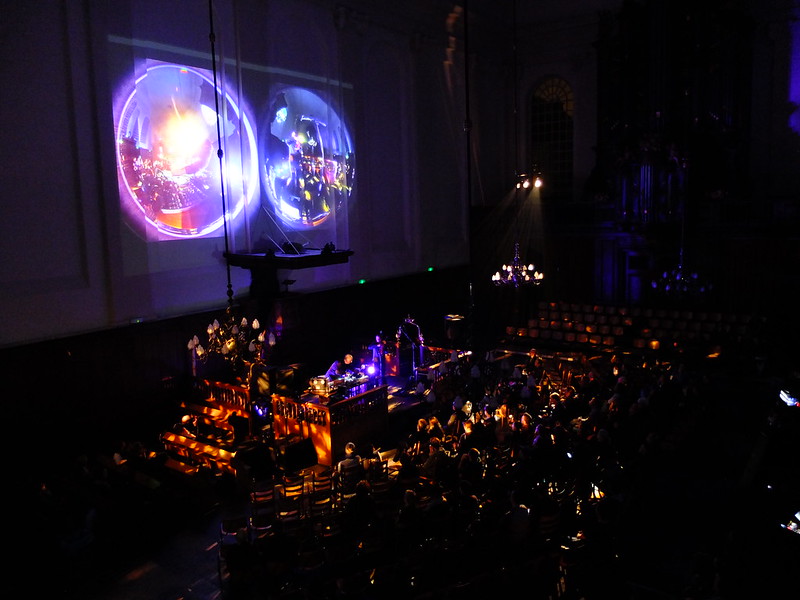
ANTHEM ALBUMS:
Ouvir trabalhos como Music for Viola and Electronics II é algo recompensador. A interação entre Michel e Oene, que se conheceram na Cloud Ensemble, entusiasma pela dificuldade dos temas propostos e como estes são tratados com a densidade necessária. O tempo é estendido e seu andamento lento provoca suspense, pela repetição dos sons eletrônicos, um verdadeiro drone, para inserções pontuais do violino que, mesmo tentando evadir essa estrutura inicialmente rígida, constrói em sua “prisão” versos verdadeiramente bonitos. A relação é expressa cuidadosamente, em uma lenta comunhão que muitas vezes se extravai para além da percepção conceitual. É um tipo de música que trabalha intensamente com conceitos, mas está primariamente fundada no que essa imersão extracorporal realiza com nossas percepções. Até a “entrada” na parte mais sinistra do disco, que se inicia na segunda faixa, é uma transição de modo que o último período da música se estenda para outra- estamos claramente falando de prolongamentos. Os eletrônicos densos e meditativos de Michel são perfurados quando combinados para a viola, mas não que um tenha necessariamente função oposta ao outro. Muitas vezes a viola cria o ambiente também enquanto a parte de Michel soa alto, revelando influências do dito dark ambient e do noise. De alguma maneira, é como se toda a potência de ambos os espectros tentasse ocupar o espaço do outro, não em forma de disputa, mas uma compreensão de possibilidades e o que tais atritos podem efetivamente criar. É certamente algo que soa além da simples soma entre sons mais “clássicos” dessas diferentes abordagens. Provavelmente releva um espaço novo sempre que tal atrito é criado, e por desconhecermos (e só estarmos dispostos a compreender o que nos viciou), foge de nossa apreensão. Banabila disse recentemente que essa é apenas uma evolução natural de sua música, mas é engraçado como um músico de seu gabarito, que desde 1986 vem produzindo um corpo sonoro muito importante para a música eletroacústica, considera “evolução natural”. Obviamente mais minimalista que suas outras obras e menos seletivo (nesse álbum, por exemplo, não há inserção de nem um sample), também abdicou de uma espécie de multi etnicismo para algo que se aproxima às relações de causa-consequência. Esse minimalismo focal, porém, cede muitas vezes espaços para construções cinematográficas. A última faixa lembra muito ambientes interioranos, e Oene nos apreende com violino e viola, onde as cordas variam entre o livre improviso e música clássica contemporânea. Essa música é exemplo da dualidade e confiança da dupla- nela, ambos os espectros realizam o livre improviso e uma construção mais metódica. Não consigo capturar o conceito de Music for Viola and Electronics II, talvez pelo que mencionei no primeiro parágrafo; a dificuldade em reconhecer novos territórios quando uma arte de vanguarda aponta elementos tão limítrofes. Curiosamente, quando os músicos convidados são introduzidos, que toda essa elaboração fica mais assimilável. Passando por toda a obra Banabila (onde Spherics talvez seja a mudança completa de rumo) temos contrariedades inerentes à visão complexa que um artista tem da música. Onde as expectativas possíveis se equivocam a cada lançamento. Mas repito, é um corpo sonoro poderoso. Eu indicaria Spherics como o melhor ponto de inserção, porque os direcionamentos de seus discos nos deixa sempre a sensação de algo realmente “grande”. Onde meros “formatos” são dissolvidos em prol de um caráter mais honesto em um lugar que as sensações ficam em primeiro plano. Ou seja, um compromisso radical com sua visão de vida, que indubitavelmente está em cada segundo de suas músicas. (Henrique Barbosa Justini)
Released March 20, 2015.

Mastering by Zlaya Hadzich.
Cover photo by Gerco de Ruijter.
Inside photo by Michel Banabila.
Layout by Yasar Saka / Yay Music & Media.
Recorded, mixed and produced by Michel Banabila.
All tracks composed by Michel Banabila and Oene Van Geel.
Michel Banabila:
doepfer A-100 analog mod. syst. (2, 5), radio (4), logic pro and keys (1, 2, 3, 4, 5)
Oene van Geel:
viola (1, 2, 3, 4, 5) and 5 string violin (4)
Keimpe de Jong: contrabass clarinet (1,2)
Joost Kroon: drums, metals (3)
Radboud Mens: ableton programming (5)
Emile Visser: cello (2, 3, 5)
Eric Vloeimans: trumpet (2, 3, 5)
A special thanks to Dennis Verschoor and Pieter Moermans for advise on the Doepfer A-100.
We would like to acknowledge financial support from the Fonds Podiumkunsten for the realization of this album. / 004TR - 2015 ℗ Tapu Records.
Fluister Festival - Banabila & Van Geel live / Concertzender Utrecht 2016:


Banabila & Van Geel Live Concertzender 28 december Fluister Festival 2016.


Banabila & Van Geel Live @ AudioArt Festival in Kraków, Poland, 2016:
Whales Calling:
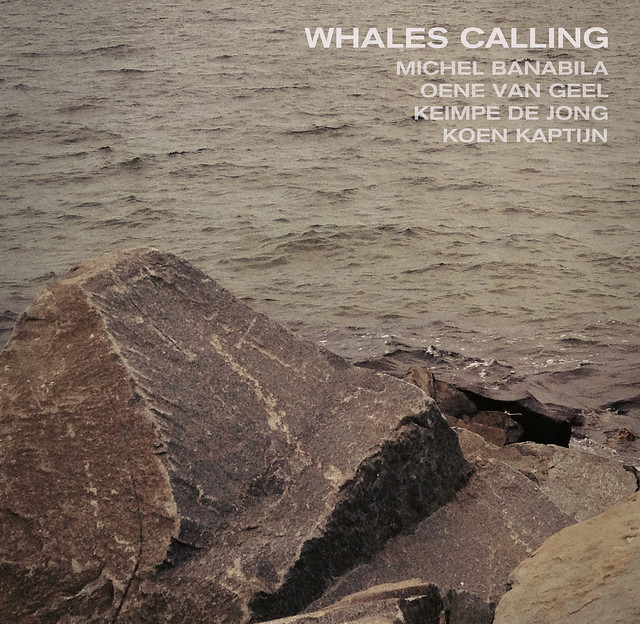
Oene van Geel's website
Michel Banabila's website

No comments:
Post a Comment
Note: only a member of this blog may post a comment.